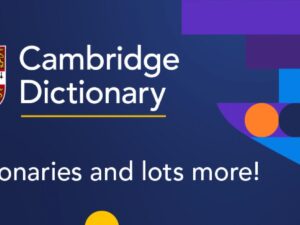Introduction
The word “free” holds a prominent place in the English language, carrying a multitude of meanings and connotations. From its literal sense denoting absence of cost to its metaphorical usage,
“free” is a versatile term that permeates various aspects of our lives. This article delves into the comprehensive meaning of “free,” as outlined by the Cambridge Dictionary.
Defining “Free”
1. Literal Definition
In its most basic form, “free” is an adjective that signifies the absence of cost, payment, or obligation. It denotes something that is not subject to a monetary charge.
2. Freedom and Liberation
“Free” also extends beyond the realm of finance. It embodies the concept of liberation, encompassing ideas of autonomy, independence, and the absence of constraints.

3. Unrestricted Access
Moreover, “free” implies unhindered access or availability. It suggests that something is openly and readily accessible without any barriers or limitations.
Etymology of “Free”
The origin of the word “free” can be traced back to Old English, where it was spelled as “freo.” This term evolved from the Proto-Germanic word “frijaz,” which meant ‘beloved’ or ‘dear.’
Usage and Contexts
1. Economics
In the realm of economics, “free” is utilized to denote goods or services that do not involve a monetary transaction. This can refer to complimentary samples, giveaways, or public services provided by the government.
2. Personal Freedom
In discussions about personal freedom, “free” pertains to the absence of oppression or coercion. It encapsulates the right to make independent choices and decisions.

3. Open Source and Technology
In the context of technology and software, “free” often refers to open-source platforms or applications that are accessible without charge.
FAQ
Q1: Can “free” have different interpretations based on context?
A1: Absolutely. The meaning of “free” can vary depending on the context in which it is used. It can denote absence of cost, liberation from constraints, or unrestricted access.
Q2: Is “free” always associated with monetary value?
A2: Not necessarily. While “free” commonly relates to the absence of cost, it can also signify liberation, independence, or unrestricted availability.
Q3: Are there instances where “free” may have hidden costs?
A3: Yes, in some cases, something initially offered as “free” may have hidden charges or requirements. For example, a free trial of a service might transition into a paid subscription after a certain period.
Q4: How does the concept of “free” relate to personal freedom?
A4: “Free” in the context of personal freedom implies the absence of oppression or coercion. It encompasses the right to make independent choices without undue influence.
Q5: Can you provide an example of “free” in the realm of technology?
A5: Certainly. Open-source software, such as the Linux operating system, is an excellent example of something that is “free” in the sense of being openly accessible without monetary cost.
Conclusion
“Free” is a multifaceted term that permeates various facets of our lives. It encompasses a spectrum of meanings from absence of cost to liberation from constraints.
Understanding the nuances of “free” allows us to navigate a world where access to information and resources is pivotal. So, the next time you encounter the term, remember its diverse connotations and the ways it shapes our interactions with the world around us.